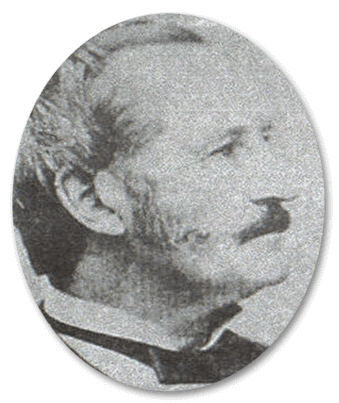Ship's Crew

John Singleton Rudd
Rank(s): Commander
Dates of Service: 12/22/1852 - 6/15/1855
Birth Date: 3/13/1801
Death Date: 10/12/1867
John Singleton Rudd was born in Newport, Rhode Island on March 13, 1801. He received his midshipman’s warrant on November 30, 1814, just as the War of 1812 was ending. His first years were a series of ship assignments–brig Firefly, frigate Congress, ship-of-the-line Franklin, ship-of-the-line Washington, frigate Cyane, and frigate Macedonian–before being promoted to lieutenant on January 13, 1825. From 1826 to 1836, he served on the frigates Brandywine, Potomac, and Constellation, then came ashore for duty in the Pensacola Navy Yard. In 1840, he reported to Macedonian again and was promoted to commander on September 8, 1841. He commanded the brig Dolphin in the Home Squadron during 1842. Rudd was largely inactive until 1847, when he went west to command the sloop-of-war Dale in the Pacific Squadron during the Mexican War. He is credited with capturing several privateers and merchantmen, as well as landing occupation parties at Guaymas and Muelje. He was inactive again from 1849 until late 1852, when ordered to command Constitution.
Commander Rudd recommissioned Constitution on December 22, 1852 and sailed for the west coast of Africa on March 2, 1853. Rudd served as flag captain to Commodore Isaac Mayo, the squadron commander. For the next two years, the ship patrolled the African coast from Liberia to Angola, primarily on the lookout for American slave traders. Constitution was too large a ship for such duty; the smaller vessels of the squadron could more easily sail into coastal waters and the small ports where slavers lurked. Nonetheless, the big frigate managed to capture the slaver H. N. Gambrill, her last prize. Extraordinarily, not one man died from an infectious diseases during the two year cruise. The ship arrived at Portsmouth, New Hampshire in June 1855. It was the end of her final overseas deployment.
Rudd was promoted to captain the following September, but had no permanent assignment until ordered to take command of the Washington Navy Yard in 1858. In May the following year, he placed the new screw sloop Lancaster in commission at Philadelphia and sailed her around Cape Horn to become the flagship of the Pacific Squadron, a role she would play until 1866. Rudd, however, was detached and placed on the retired list on December 21, 1861. He served as fourth district lighthouse inspector from 1862 until 1866. He died in Philadelphia on October 12, 1867 and was interred in the Episcopal Cemetery at Fredericksburg, Virginia.
Image Credit
Courtesy Naval History & Heritage Command